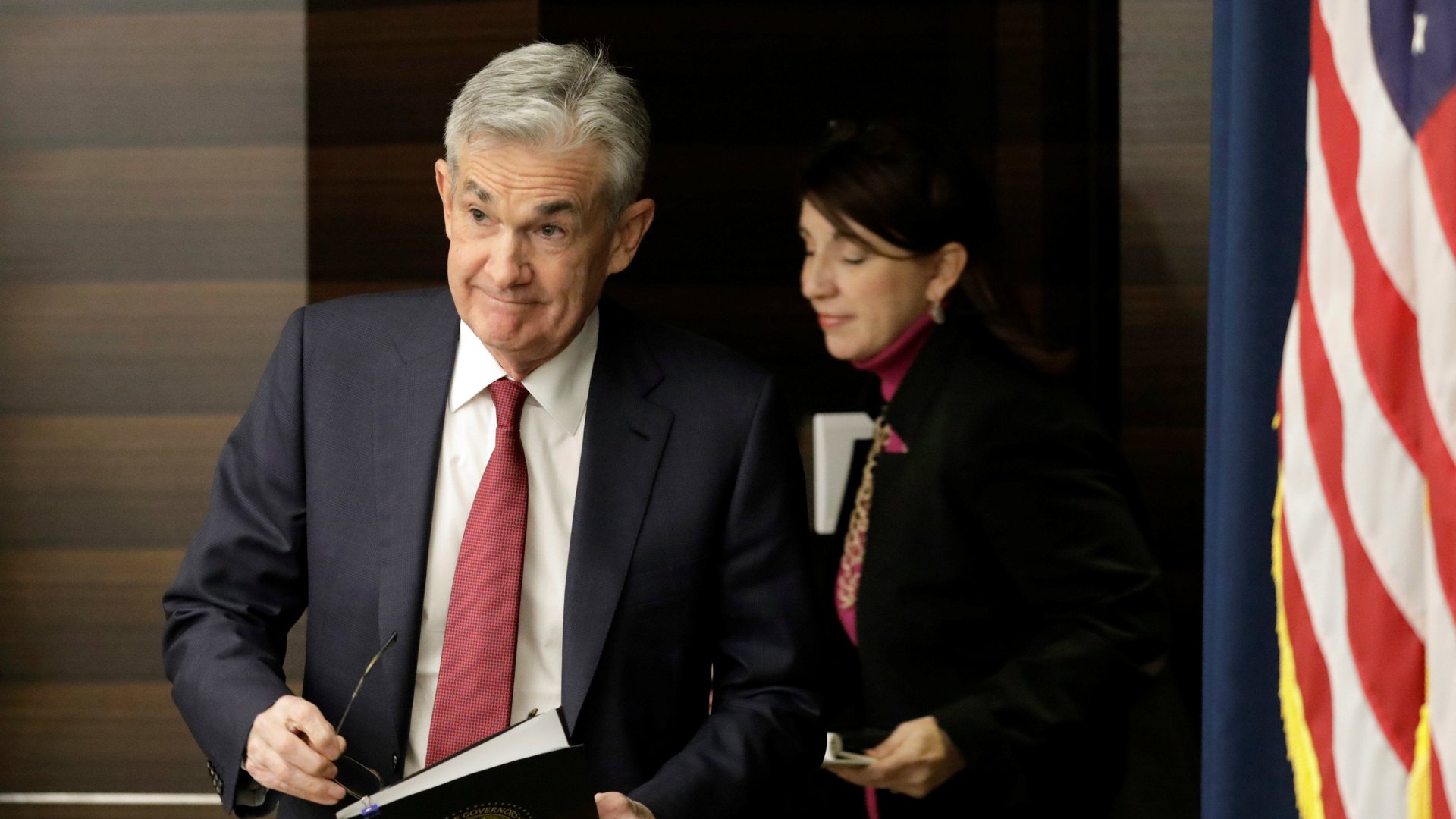The Fed is feeling a tiny tinge of anxiety about the slowing economy
The US Federal Reserve just announced its fourth interest rate hike of the year, setting the target range for its benchmark overnight rate at 2.25-2.5%, up from 2.0-2.25%. It’s a move that was clearly telegraphed, but amid weeks of market volatility and jitters about the state of the global economy, some doubt crept in about the Fed’s commitment to continued rate hikes.


The US Federal Reserve just announced its fourth interest rate hike of the year, setting the target range for its benchmark overnight rate at 2.25-2.5%, up from 2.0-2.25%. It’s a move that was clearly telegraphed, but amid weeks of market volatility and jitters about the state of the global economy, some doubt crept in about the Fed’s commitment to continued rate hikes.
As followers of the Fed already know, the central bank makes big changes in the slightest of ways. Blink and you’ll miss the signals.
Today, policymakers basically said, “markets are mostly right, the US economy is slowing, and we’re going to slow down too.”
But of course it didn’t actually say this. The statement from the Federal Open Market Committee (pdf), which sets interest rates, read:
“The Committee judges that some further gradual increases in the target range for the federal funds rate will be consistent with sustained expansion of economic activity, strong labor market conditions, and inflation near the Committee’s symmetric 2 percent objective over the medium term.”
In September (pdf), the last time the Fed raised rates, the statement said:
“The Committee expects that further gradual increases in the target range for the federal funds rate will be consistent with sustained expansion of economic activity, strong labor market conditions, and inflation near the Committee’s symmetric 2 percent objective over the medium term.”
Do you see it? This month, the Fed has said that some further gradual increases are to be expected. The word “some” is working very hard here, to flag that the hikes will be less aggressive than previously expected.
At the same time, the Fed lowered its economic projections (pdf) for next year. Now, the median forecast for US GDP among policymakers is 2.3% in 2019, down from a forecast of 2.5% in September. Not a big downgrade, but a downgrade nonetheless.
Let’s go back to the language in the statement. “The Committee judges that risks to the economic outlook are roughly balanced, but will continue to monitor global economic and financial developments and assess their implications for the economic outlook,” it read. The bit after the “but” is added to what it said in September, suggesting that the Fed will be closely watching future data to decide what to do next. This matters a lot more than it may seem, because starting next month the Fed will hold a press conference after every meeting, boosting the number of opportunities it has to announce changes in policy.
The other major (but in sight, minor) change to the Fed’s outlook is the so-called dot plot. Each policymaker on the Fed’s rate-setting committee puts a dot on a chart that shows where they think the Fed target range for rates will be at the end of the year for the next three years. Look closely, very closely, at the dots below and you’ll see that dots this month have shifted slightly downwards from September. Next year, the median expectation is for two rate hikes, compared with three in September’s chart.
The Fed didn’t give markets what they wanted, not giving into the panic (and Donald Trump’s Twitter feed) by putting a pause on hikes. More interest rate increases are on the cards, regardless of how bad the stock market is doing (it’s having its worst December since the Great Depression, so that’s pretty bad). Fed chairman Jerome Powell did, however, acknowledge in a press conference today that there have been “some developments that may signal some softening,” citing a global economic slowdown and stock market declines. But he holds relatively firm by saying that these things haven’t “fundamentally altered the outlook.”
There are reasons for the Fed to remain positive. The US just logged its 98th consecutive month of job gains, by far the longest stretch on record, while the unemployment rate held at 3.7%, the lowest in around 50 years, and average hourly earnings rose by 3.1%, matching the highest rate since 2009. But the economies of Italy, Germany, and Japan all contracted in the third quarter, and China’s economy is slowing. A recent survey of fund managers by Bank of America Merrill Lynch found that more than half expect global growth to weaken over the next 12 months—the worst outlook since October 2008.
HSBC warns that one of the big risks of 2019 is the Fed hiking too many times, especially if it’s preoccupied by accelerating inflation instead of weakening economic growth. For now, the message from the Fed is that we are probably past the peak of the rate-hike cycle, the stock market, and economic growth.